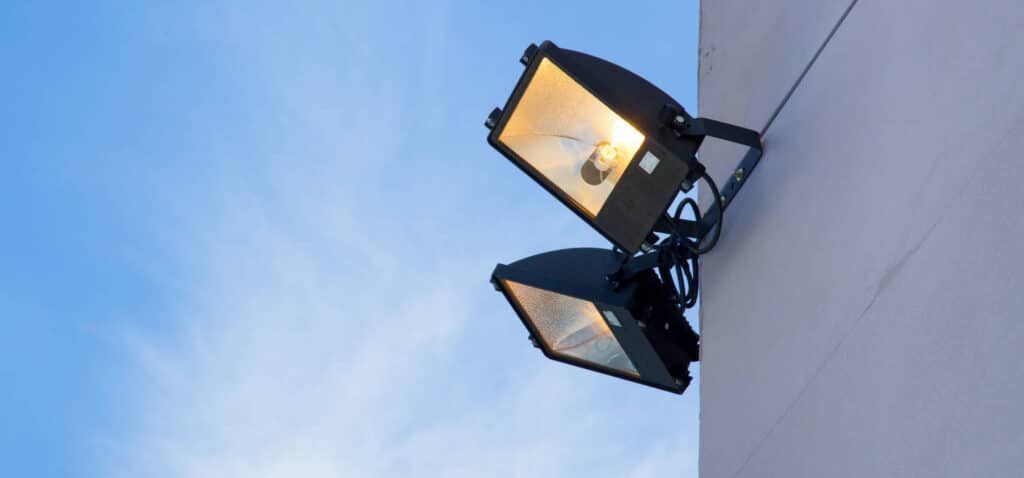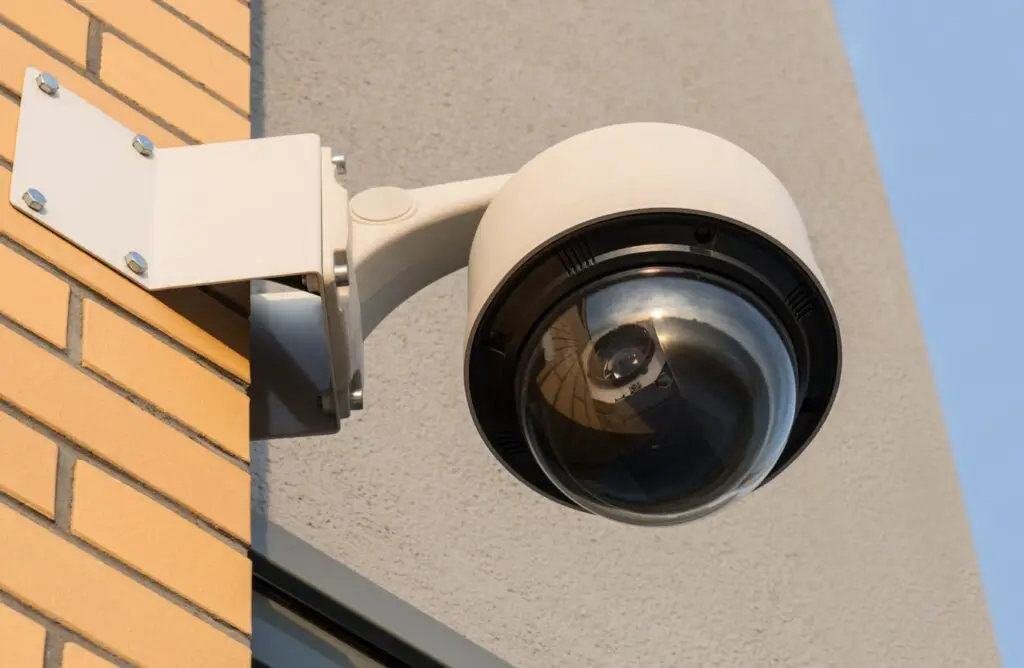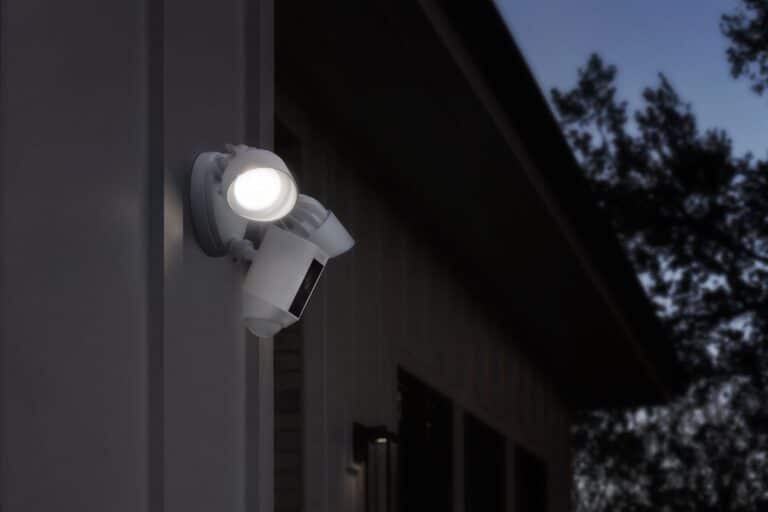Introduction
Why Is My Outdoor Security Light Flashing: Security lights illuminate and prevent intruders from your property. These lights are strategically placed around a home or business to improve nighttime visibility. However, an unexpected external security light flashing can be worrisome.
There are several reasons why your outdoor security light might be flashing. One common cause is a power surge or fluctuation in the electrical supply. When the voltage spikes or drops, it can disrupt the normal functioning of the light and cause it to flash. Another possible explanation is a faulty bulb or loose connection. If the bulb is not securely fitted or if the wiring is loose, it can result in intermittent flashing.
Weather conditions can also play a role in the flashing of outdoor security lights. Heavy rain, lightning, or strong winds can cause electrical disturbances, leading to erratic behavior of the light. Additionally, insects or other pests may be triggering the motion sensor, causing the light to flash unnecessarily. Understanding why your outdoor security light is flashing is crucial for troubleshooting and resolving the issue. By identifying the underlying cause, you can take appropriate steps to fix the problem or seek professional assistance if needed.

Why does my security light stay on for no reason?
What Causes my Light to Stay On? Several things can cause your motion detector to stay on, including age, storm damage, a power surge, improper installation, and improper settings.
There can be various reasons why a security light stays on for no apparent reason, causing confusion and concern. Understanding these potential causes can help in troubleshooting and resolving the issue.
A broken motion sensor may keep a security light on. Motion sensors switch on lights when they detect movement. If the sensor is damaged, misaligned, or dusty, it may keep the light on.
Another reason could be interference from external sources. Nearby sources of heat, such as vents or exhaust fans, can trigger the motion sensor and cause the light to stay on. Similarly, reflective surfaces, like windows or shiny objects, can bounce light back to the sensor and give a false detection signal.
Additionally, power supply issues can contribute to a security light staying on. Voltage fluctuations, power surges, or unstable electrical connections may cause the light to remain illuminated. If the problem persists, inspect the electrical connections, wiring, and power supply to identify any issues. Consider contacting a professional electrician for a thorough examination and potential repair or replacement of the faulty components.
Why is my outdoor security light flashing?
Most flickering lights are caused by one of three things: A faulty bulb. Bad connection between the bulb and the light fixture. Problems within the circuit.
There are several reasons why your outdoor security light might be flashing. One common cause is a power surge or fluctuation in the electrical supply. When the voltage spikes or drops, it can disrupt the normal functioning of the light and cause it to flash. Another possible explanation is a faulty bulb or loose connection. If the bulb is not securely fitted or if the wiring is loose, it can result in intermittent flashing.
Weather conditions can also play a role in the flashing of outdoor security lights. Heavy rain, lightning, or strong winds can cause electrical disturbances, leading to erratic behavior of the light. Additionally, insects or other pests may be triggering the motion sensor, causing the light to flash unnecessarily.
In some cases, a flashing security light can be an indication of a more significant issue, such as a malfunctioning sensor or a wiring problem. It is essential to investigate the flashing and determine the underlying cause to ensure the proper functioning of the security light.
If your outdoor security light flashes, examine the power supply and bulb installation. Inspect the wiring connections for any signs of damage or looseness. If the issue persists, consider adjusting the motion sensor settings or cleaning the sensor to prevent false triggers.
Why is my LED security light flashing?
The problem can be just anywhere: a faulty switch, old fixture wiring, worn-out connectors, service conductors in the electrical panel. If there is an increase in flickering and it’s not due to any change that you have made in the electrical circuit, loose wiring could be the reason.
If your LED security light is flashing, there are a few potential reasons behind it. LED lights are energy-efficient and long-lasting, although they can flash.
One common reason for an LED security light to flash is an incompatible or faulty dimmer switch. LED lights require specific dimmers that are designed to work with them. If the dimmer switch is not compatible or is of low quality, it can cause the LED light to flicker or flash. Replacing the dimmer switch with one that is compatible with LED lights can often resolve this issue.
Another possible cause is voltage fluctuations or electrical interference. LED lights are sensitive to changes in voltage, and if there are spikes or drops in the electrical supply, it can lead to flashing. In some cases, electrical interference from nearby appliances or electronic devices can also affect the LED light’s performance.
What does red blinking security light mean?
This blinking red light can be referred to as the anti-theft or immobilization light. The anti-theft light indicates that you need your key to start the vehicle, and it also alerts any car thief that this vehicle has an anti-theft system.
A red blinking security light can have different meanings depending on the specific context and type of security system. However, in general, a red blinking security light is often used as an indicator of a potential issue or alarm activation.
An armed and operating security system often has a red blinking light. It deters burglars and alerts them to surveillance. This blinking light is meant to reassure and dissuade unlawful entry.
However, a red blinking security light can also indicate a problem with the security system itself. It may be signaling a fault or malfunction in the system’s components, such as the sensors, control panel, or communication devices. In this case, the blinking light serves as a warning that the system needs attention or maintenance. If you have a security system with a red blinking light and you are unsure about its meaning, it is important to consult the user manual or contact the manufacturer or security service provider for clarification.
What are common problems with security lights?
Lights Stay On
Sensors should trip when too many grid points are obstructed or movement is detected. Thus, your lights should only be on when there’s clear movement in your premises. Your lights staying on could be due to electrical issues, power surges, user error, or anything else.
Bulb Failure: Over time, the bulbs in security lights can burn out or become damaged. This can result in reduced or no illumination. Regular bulb replacement is necessary to maintain optimal performance.
Sensor Malfunction: Motion sensors are a crucial component of security lights. However, they can experience malfunctions, such as false triggers or failure to detect movement. This can lead to lights not turning on when needed or staying on constantly.
Wiring Problems: Loose, frayed, or damaged wiring can cause security lights to malfunction. Poor connections or exposed wires can disrupt the electrical flow and result in flickering lights or intermittent operation.
Power Supply Issues: Fluctuations in the electrical supply, power surges, or voltage drops can impact the performance of security lights. These issues can lead to flashing, dimming, or inconsistent illumination.
Environmental Factors: Harsh weather conditions, exposure to moisture, or the presence of insects and pests can affect security lights. Water ingress, excessive heat, or insect interference can cause malfunctions or reduce the lifespan of the lights.
Timer or Control Panel Problems: Security lights with timers or control panels might malfunction. Incorrect settings, programming issues, or malfunctioning components can cause lights to not switch on or off.
How do you fix an outdoor sensor light?
How Can You Fix Motion Sensor Lights?
- Turn It Off and Back On. Believe it or not, sometimes all your motion sensor lights need is to be manually switched off and on again!
- Replace the Batteries. If neither of the previous two attempts worked, you may have a battery problem.
- Replace the Bulb.
Fixing an outdoor sensor light can involve several steps to identify and address the underlying issue. Here is a general guide on how to fix an outdoor sensor light:
Check the Power Supply: Ensure that the light is receiving power by verifying the circuit breaker and checking any switches or timers associated with the light.
Clean the Sensor: Dirt, dust, or debris can obstruct the sensor’s performance. Gently clean the sensor using a soft cloth or brush to remove any buildup that might be affecting its sensitivity.
Adjust Sensor Settings: Some sensor lights have adjustable settings for sensitivity, duration, and range. Experiment with these settings to find the optimal configuration for your needs.
Test the Bulb: If the light is not turning on, the bulb may be burnt out. Replace the bulb with a new one and ensure it is the correct type and wattage for your light fixture.
Inspect Wiring Connections: Loose or damaged wiring connections can cause issues with the light’s operation. Check the wiring connections for any signs of damage or looseness and ensure they are securely fastened.
Consider the Environment: External factors such as nearby heat sources or reflective surfaces can interfere with the sensor’s function. Adjust the sensor’s positioning or eliminate potential sources of interference if necessary.
How can I troubleshoot a flashing outdoor security light?
Troubleshooting a flashing outdoor security light involves a systematic approach to identify and resolve the underlying issue. Here are some steps you can take to troubleshoot a flashing outdoor security light:
Check the Power Supply: Ensure the light has stable power. Check the circuit breaker or fuse box for tripping or difficulties.
Inspect the Bulb: A loose or faulty bulb can cause flashing. Make sure the bulb is securely fitted in the socket. Consider replacing the bulb with a new one to rule out any bulb-related issues.
Examine the Wiring Connections: Electricity might flash due to loose or faulty wiring. Check the wiring connections for security and condition.
Clean the Motion Sensor: Dust, debris, or insects on the motion sensor can trigger false detections and lead to flashing. Clean the sensor carefully using a soft cloth or brush to remove any obstructions.
Adjust Sensor Settings: Check the sensitivity, range, and duration settings of the motion sensor. Experiment with different settings to find the optimal configuration for your needs.
Address Environmental Factors: External factors like nearby heat sources or reflective surfaces can interfere with the motion sensor’s operation. Adjust the sensor’s positioning or eliminate potential sources of interference.
Is a flashing outdoor security light a cause for concern?
Yes, a flashing outdoor security light can be a cause for concern. While occasional flashing or flickering may not necessarily indicate a serious problem, persistent or frequent flashing can indicate underlying issues that require attention. Here’s why it is a cause for concern:
Reduced Security
A flashing security light may not provide the intended deterrent effect or adequate illumination, compromising the security of your property. It may fail to deter potential intruders or make it difficult to detect any suspicious activity.
Malfunctioning System
Continuous flashing can be a sign of a malfunctioning sensor, faulty wiring, or other technical issues within the security light system. These problems can affect the overall functionality and reliability of the system.
Electrical Issues
Fluctuations in voltage or power surges can cause a security light to flash. Such electrical issues may be indicative of larger electrical problems in your property, which could potentially lead to safety hazards or further malfunctions.
Energy Consumption
A flashing security light can consume more energy than necessary. This can result in higher electricity bills and unnecessary strain on the electrical system.
False Alarms
Motion sensor false detections might cause flashing security lights. Environmental elements including wind, animals, and plants can create unnecessary activations and alert fatigue.

Conclusion
Flashing outdoor security lights can be a cause for concern, as they may indicate a potential issue with the electrical system or components of the lighting system. However, understanding the possible reasons behind the flashing can help you address the problem effectively. Power surges or fluctuations, faulty bulbs or loose connections, adverse weather conditions, and triggered motion sensors are all factors that can contribute to this issue.
By identifying the specific cause, you can take appropriate steps to resolve it and restore the normal functionality of your outdoor security camera. Troubleshooting steps such as checking the power supply, inspecting and securing the bulb and wiring connections, and adjusting the motion sensor sensitivity can help in resolving the flashing issue.
It is important to prioritize safety while handling any electrical components and consider seeking professional assistance if you are unsure or uncomfortable with the troubleshooting process. Regular maintenance and periodic inspections of your outdoor security lighting system can also prevent future flashing incidents. Maintaining your security lights’ durability and efficacy requires proper installation, weatherproofing, and operation.

